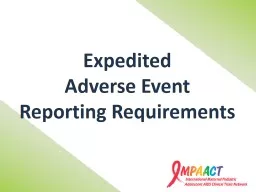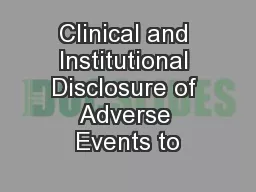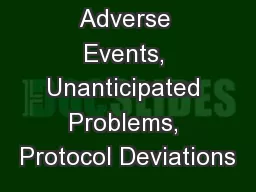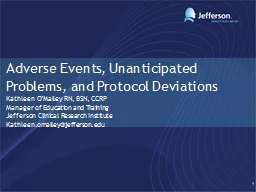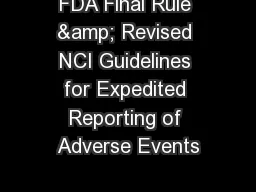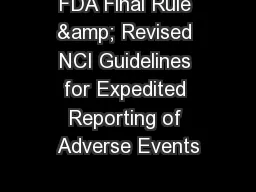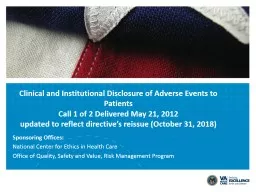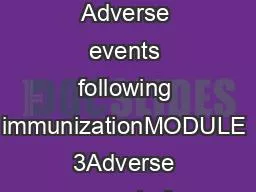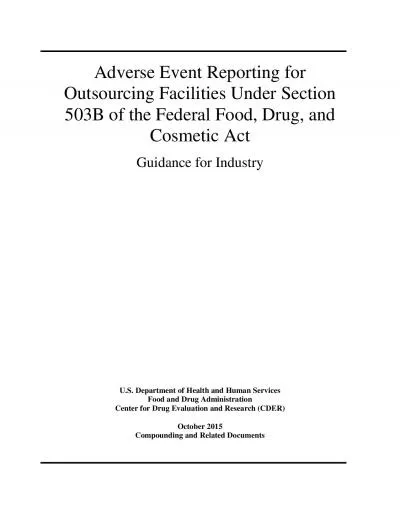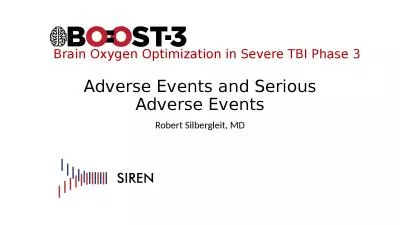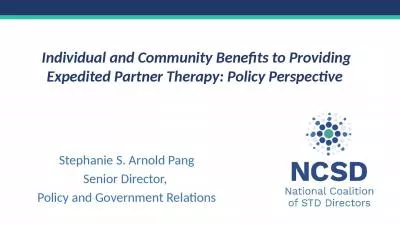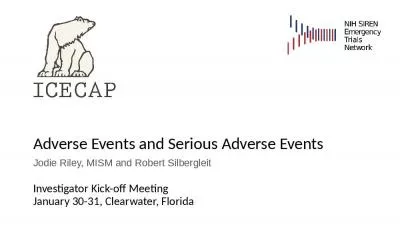PPT-Expedited Adverse Event
Author : pasty-toler | Published Date : 2018-03-19
Reporting Requirements Protocol References Section Title 72 SafetyRelated Data Collection 73 Expedited Adverse Event Reporting Other References and Resources 3 Manual
Presentation Embed Code
Download Presentation
Download Presentation The PPT/PDF document "Expedited Adverse Event" is the property of its rightful owner. Permission is granted to download and print the materials on this website for personal, non-commercial use only, and to display it on your personal computer provided you do not modify the materials and that you retain all copyright notices contained in the materials. By downloading content from our website, you accept the terms of this agreement.
Expedited Adverse Event: Transcript
Download Rules Of Document
"Expedited Adverse Event"The content belongs to its owner. You may download and print it for personal use, without modification, and keep all copyright notices. By downloading, you agree to these terms.
Related Documents

